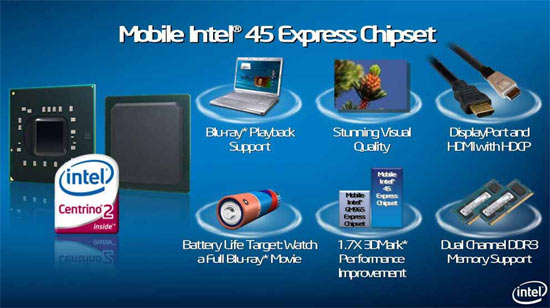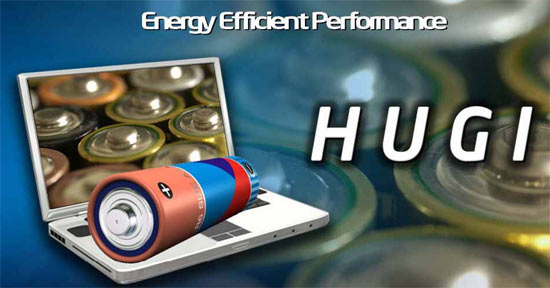Intel Centrino 2 Takes Off Running

Today is a special day for Intel as it is the 5thanniversary for the Centrino mobile platform and they are celebrating it with the launch of the Centrino 2 platform (Montevina). Intel started to design the Intel Centrino mobile platform in 1999 and for the time it was cutting edge as WiFi in 1999 was a just dream. When the Intel Centrino platform was launched in 2003 only 16% of notebooks contained Wireless technology (WiFi). Today over 95% of retail notebooks contain WiFi. With Centrino 2, Intel is planning for the future with a platform that is able to adapt to what we need in today’s marketplace.

Intel believes that social networking, user-generated content and visualization are the driving forces in the market today. What platform will bring these uses to the user? Intel believes the Centrino 2 platform will be the perfect match for consumers to bring these driving forces together.

Centrino 2 is made of of three major components, the processor, the wireless card and the chipset. Intel Centrino 2 processors are 45nm Intel Core 2 Duo and Quad processors with up to 6MB L2 cache and a 1066MHz FSB. Intel is introducing the Intel Core 2 Extreme Mobile Processor X9100 which is now the highest performing flagship processor for the Centrino 2 platform and operates at 3.06GHz. Just like other Extreme mobile processors the X9100 has Overspeed protection removed, so consumers will be able to overclock the processor if the notebook allows it. When it comes to TDP ratings the X9100 is mobile friendly at just 44W. Intel showed a demo of the Intel Core 2 Extreme Mobile Processor X9100 playing Ubisoft’s Assassins’ Creed on a notebook with a pair of ATI mobile graphics cards running in CrossFire and the game play looked great!

Other than the new 45nm processors with a faster FSB and more cache the Centrino 2 platform also has a new chipset. The Intel 45 Express Chipset will be the heart and soul of the Centrino 2 platform and has improved graphics thanks to 5th generation graphics that are integrated into the chipset. The improved graphics offer nearly a 2X increase in performance versus previous generation chipsets. The new chipset also support dual channel 800MHz DDR3 memory modules, which offer more bandwidth and consume less battery power. The memory speed bump is an increase of 133MHz which means that consumers can now run 800MHz memory kits versus 667MHz in current Centrino platforms. Intel has said that the Blu-ray playback will be clear and stutter-free with the integrated graphics. Intel also says they can get through the entire Blu-ray movie on the battery, which is a big deal.

Intel says that this is possible thanks to HUGI. What the heck is HUGI? It stands for Hurry Up and Get Idle. Intel has improved the time it takes to get to sleep and to wake up and they claim it has improved battery life by a significant amount. Intel claims that HUGI is the secrect sauce for Centrino 2 as battery life is so important with high definition graphics such as Blu-ray playback. While we are on the subject of Blu-ray Intel made said that by 2013, the number of Blu-ray drives shipping in laptops will outnumber Blu-ray drive shipments in game consoles. Think about that one for a second!
No comments:
Post a Comment